Mesopotamia was situated between the Euphrates and Tigris rivers and it was the first-known civilization. It covered parts of modern-day Kuwait, Iraq, eastern Syria, southeastern Turkey, and regions along the Iran–Iraq and Turkish–Syrian borders.
Mesopotamia has been ruled by many different people from the Sumerians and the Akkadians to the Achaemenid Empire in 539 BC, Alexander the Great in 334 BC and, after his death, the Greek Seleucid Empire and the Parthian Empire.
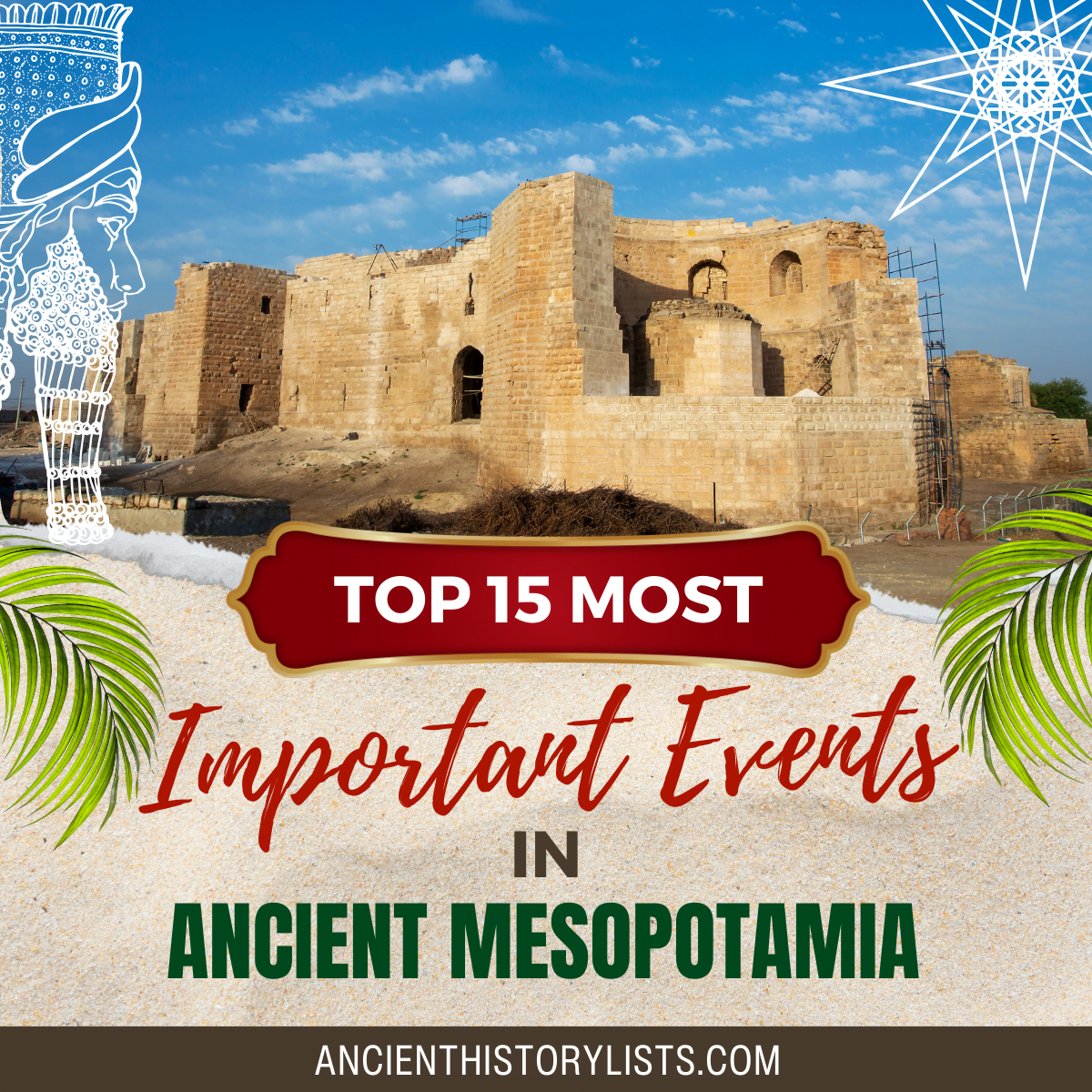
Mesopotamian land was also a key battleground in the wars between the Romans and the Parthians. All these different civilizations have left their mark culturally and through their many important inventions and discoveries.
Mesopotamian history can be traced back to the Neolithic period around 10,000 BC. From agriculture to transportation, we can see the influence of the Mesopotamians everywhere, with the Sumerians, the Babylonians, and the Assyrians undoubtedly being the most inventive civilizations.
Now let’s have a look at the top 15 events of ancient Mesopotamia:
1. Cities, Agriculture, Irrigation, and the Plow (5000 BC)
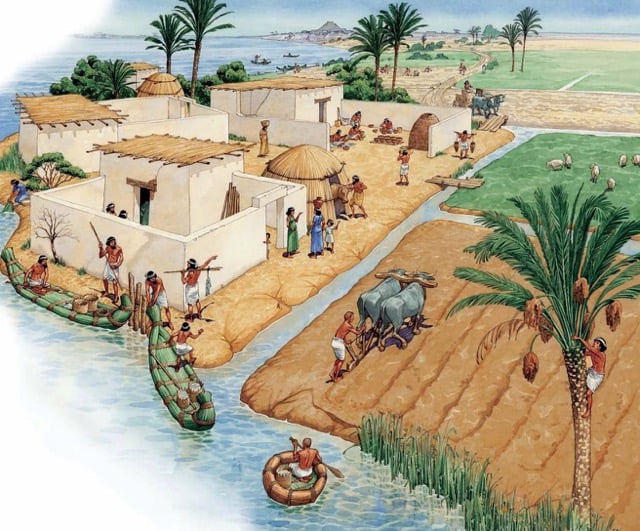
The earliest-known civilization was Sumer in southern Mesopotamia. Before this, the most important cities were Eridu, Bad-tibira, Larsa, Sippar, and Shuruppak. Each Mesopotamian city was built around a temple and was governed by a priest. They were independent city-states and had distinct boundaries such as canals. By 4000 BC, the Sumerians had started to build large ziggurat temples in their cities.
Known as the land of rivers, Mesopotamia did not lend itself to farming. It was only possible by way of proper irrigation and drainage. But the Tigris and Euphrates rivers were a blessing in disguise. The land near them was fertile and prone to yearly flooding, but the land further away was inhospitable and needed irrigation.
The Mesopotamians learned how to harness the flow of water. During the main growing season, farmers were allocated a certain amount of water, and this water was diverted from canals into irrigation ditches. The Mesopotamians realized that the water supply from rivers was unreliable, so they dug a maze of waterways and ditches from the rivers to their fields. This created a reliable water source for farming. The crops fed the population, and farmers were able to trade the excess produce such as onions, garlic, apples, figs, grapes, and pomegranates.
With these new irrigational practices, agriculture in Mesopotamia flourished like never before. With lucrative trade overseas, the Mesopotamians soon became a powerful empire, and farmers looked to develop their techniques even further. The plow came about when, sometime during the sixth millennium, a farmer decided to attach his ox to his digging stick.
The ard plow was made up of twisted tree branches which were readily available in the local area. The plow was heavy, and dirt would stick to it and have to be removed manually. Furthermore, it did not work on densely grassed areas. Iron versions had replaced the wooden plow by 2300 BC, and by 1500 BC, the Mesopotamian seeder plow came into existence.
2. Cuneiform (3600 BC)
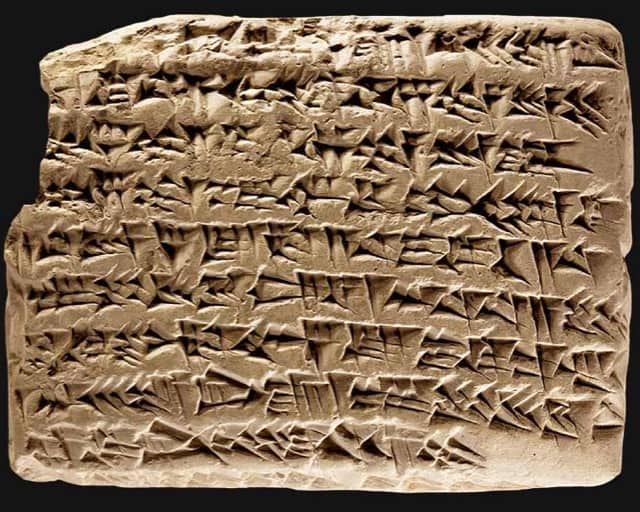
Initially, tokens were used to count goods, but with the increase in trade, things became more complex. Clay tablets with symbols were introduced as a way of keeping records. From 3100 BC, the state required every person to register their name along with details of their possessions. It was difficult to represent everything using only one symbol, and soon a system of phonetic writing developed which gradually evolved into cuneiform.
Pictographs were hard to remember, so a system of straight lines with an absence of originality were used instead. Numbers were written in the form of strokes. As their writing developed, the Mesopotamians were able to record transactions, stories, and myths.
There were a total of 600 symbols in this writing style, and cuneiform, created by the Sumerians, was used by the Assyrians, the Hittites, the Elamites, the Akkadians, and the Babylonians for about 3,000 years.
3. The Wheel (3200 BC)
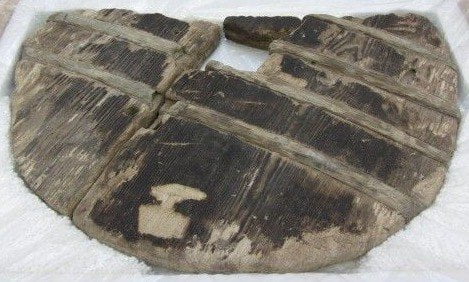
The wheel was invented to be used in pottery making, but the Mesopotamians soon developed it further into a means of transportation in the form of the chariot around 2400 BC.
The invention of the wheel cannot be understated, and in ancient times, it revolutionized trade, ceramics, irrigation, and warfare. The oldest-known wheel is the Ljubljana Marshes Wheel which was discovered in Ljubljana in 2002, dating back 5,150 years.
4. Mathematics (3000 BC)
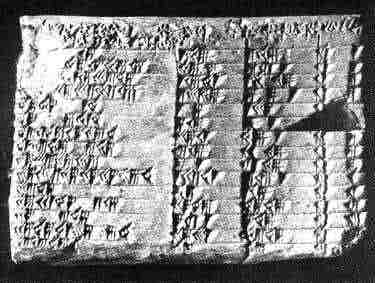
The Mesopotamians were great mathematicians. They were the first to develop the place value system based on a number’s position in a sequence. The Babylonians based their math on the number 60, and this concept is known as the sexagesimal system. It led to the creation of the 360-degree circle and the 12-month year.
Evidence of Babylonian mathematics is widespread, and at least 400 mathematical clay tablets have been unearthed since the 1850s. These clay tablets date back to around 1800 or 1600 BC and cover fractions, algebra, the Pythagorean theorem, and quadratic and cubic equations. There is some debate over whether Babylonian math could have dated back to the fifth or third millennium.
The Sumerians had developed a complex system of metrology by 3000 BC, and from 2600 BC onwards, they inscribed multiplication tables on clay tablets and dealt with geometric and division problems. The idea of zero came from the Babylonians and they were able to articulate the concept of nothing. Over time, the concept of zero was introduced by many other civilizations; some claim it even began in ancient India.
5. Gilgamesh (2700 BC)
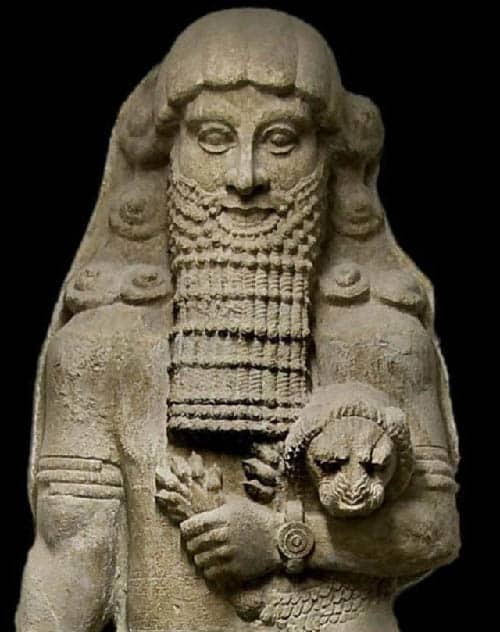
The hero of Uruk, Gilgamesh, was such an important figure that many myths and stories exist about him. The city walls of Uruk and tablets found there document his deeds and his quest for the meaning of life.
In the great literary work, the Epic of Gilgamesh, he is portrayed as half god and half man. This idea comes from his parents as his mother was thought to be the goddess Ninsun and his father was Lugalbanda, the god-king of Uruk. Gilgamesh ruled the city for around 126 years.
6. The Akkadian Empire and Sargon I (2334 BC)
The Akkadian Empire united the Sumerian and the Akkadian-speaking people to create a Semitic-speaking empire. Sargon, the powerful king of Akkad, defeated Lugal-zage-si in the Battle of Uruk and conquered Mesopotamia to establish the world’s very first multinational kingdom or empire.
The Akkadian Empire was a political and social entity and ruled through administration, bureaucracy, and the military. Sargon’s contributions were so great that he was regarded as the greatest man alive at the time. After seizing the Sumerian states, Uruk continued to expand for some 200 years. Oman, the Mediterranean, Syria, and Elam all became part of this huge empire. Sargon was the first to come up with the idea of making the king’s son his legal heir and his daughters priestesses.
Another powerful Akkadian king was Naram-Sin, Sargon’s grandson, who ruled for 50 years. His reign brought great prosperity to the kingdom. In 2100 BC, the Sumerian city-state of Ur rose to power and conquered the Akkadian Empire. Once again, the Sumerians were in power but only for a short period as, sometime around 2000 BC, the Amorites took over. Within 180 years, the Akkadian Empire had fallen; this may also have been due to a deadly drought.
7. The Assyrian Empire (2500 BC)
The Assyrian Empire was the most prominent ruling empire of Mesopotamia, starting in the early Bronze Age and lasting until the Iron Age. The empire rose and fell many times. At its height, the Assyrian Empire stretched from Cyprus to Libya, covering the eastern Mediterranean, Armenia, Iran, the Arabian peninsula, and Egypt.
Assyria gets its name from the ancient city of Assur which dates back to 2600 BC. Assyrian rule can be divided into four phases: the Old Assyrian Empire, the Early Assyrian Empire, the Middle Assyrian Empire, and the New Assyrian Empire. The strongest ruler to rule the empire was Shamshi-Adad under whose reign the empire expanded northwards and became very rich. After his death in 1781 BC, the empire weakened and fell to the Babylonians. It rose again between 1360 BC and 1074 BC, and under Tiglath-Pileser I’s rule it expanded to the Middle East, Cyprus, Egypt, Babylonia, and Israel.
Its final rise to power was in 744 BC. Famous rulers of this period were Sargon II, Tiglath-Pileser III, Ashurbanipal and Sennacherib. Finally, the Assyrian Empire fell in 612 BC when the Babylonians conquered the Assyrians for good.
8. Epic of Gilgamesh (2150 BC)
This epic poem about Gilgamesh was found in 1853 by Hormuzd Rassam. The epic was discovered on 12 incomplete tablets in the library at Ninevah. There were gaps in the story which were filled with parts found elsewhere in Anatolia and Mesopotamia.
The first half of the epic tells the story of how Gilgamesh and Enkidu became friends. Enkidu was a wild man whom the gods had created to put a stop to the oppression faced by the people who lived under the rule of Gilgamesh. Enkidu challenged the king to take a test of strength which Gilgamesh passed, and finally the two become friends.
They set out on a six-day journey to the cedar forest which they planned cut down to make a gate for the city of Nippur, and to slaughter Humbaba, its guardian. They then went on to kill the mythical Bull of Heaven, which had been sent by the goddess Ishtar to punish Gilgamesh for rejecting her advances. The gods sentenced Enkidu to death for helping Gilgamesh.
In the second half, Enkidu’s death had a traumatic effect on Gilgamesh and he decided to undertake a journey to discover the secret of life. On this journey, he learned that “life, which you look for, you will never find. For when the gods created man, they let death be his share, and life withheld in their own hands.” (Source) Gilgamesh finally succumbed to death but due to his magnificent progress, and thanks to the mythical character Utnapishtim, he attained immortality.
Gilgamesh earned a lot more fame after his death than during his life. This epic poem has been translated into many different languages in many different formats.
9. Maps (2300 BC)
Mesopotamia was indeed a place of significant technical and cultural innovation, and also the first civilization to bring us the map. The earliest map was discovered in Babylonia in 2300 BC in mud-tablet form. The map was of the Akkadian area of Mesopotamia in present-day Iraq. These ancient maps showed cities, hunting grounds, trading routes, and military areas.
10. The Calendar (2000–1000 BC)
The Mesopotamians were fond of astronomy, and knew that the earth revolving on its axis meant it was revolving around the sun. The calendar they made was divided into two seasons: summer and winter.
The second half of May included the barley harvest, and after two months of cutting grain, they began their financial year. In most areas, the new year was said to start with the first visible lunar crescent as the calendar was primarily based on the moon. However, a royal new year was also celebrated during which the king offered the first harvest to the gods. Months had different names depending on the city.
The Assyrians kept an economic calendar which had 360 days. Celebrations during the year depended upon the seasons, which made them solar, therefore an intercalary month was added every sixth year. The Assyrians used to have either a five-day week or a ten-day week. By 1000 BC they were following the Babylonian calendar. A month according to the Babylonian calendar was divided into seven-day intervals. The Mesopotamian calendar gained widespread acceptance during the second millennium BC.
11. The Code of Hammurabi (1754 BC)
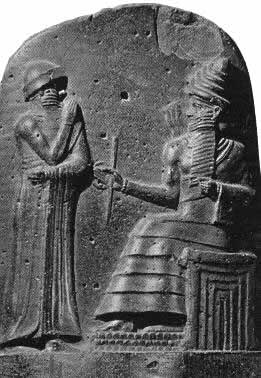
In 1792 BC, Babylon came to power and the rule of Hammurabi began. Hammurabi enacted a code of law written on a 7.5-foot stone stele and various clay tablets. The system consisted of 282 laws and their punishments based on the system of “an eye for an eye, a tooth for a tooth.” Sentences were handed out depending on social status, and whether the accused was a slave or a free man. Most of the laws were laws of contract, like providing wages to laborers and fulfilling responsibilities.
The Code of Hammurabi is the longest-surviving text from the Old Babylonian era. It was based on previous laws introduced by the king of Ur (2050 BC), the Laws of Eshnunna (1930 BC), the Codes of Lipit-Ishtar of Isin (1870 BC), and the Code of Ur-Nammu. Later ones include the Assyrian laws, the Hittite laws, and the Law of Moses.
Read more about the Contributions of Hammurabi.
12. The Sailboat (1300 BC)
The Sumerians realized that traveling on water was faster than going via land, so they came up with the idea of the sailboat. The sailboat was essential in helping people to trade further afield, although initially, the Mesopotamians used it on the Tigris River for fishing and exploration purposes. The sailboat was primitive in design. It was square, and the sail was made of cloth. It could only travel in the same direction as the wind.
13. The Library of Nineveh (668–627 BC)
The Assyrian king, Ashurbanipal, decided to create a record of the history, myths, and stories from Sumer, Babylon, and Assyria and collate them all in one library. Where other kings are remembered for their success on the battlefield, Ashurbanipal is famous for recording his reign.
The library was discovered in 1850 when archaeologists found more than 30,000 clay tablets inscribed with cuneiform. These writings were not only administrative and legal texts and letters, but also recorded thousands of magical, divinatory, medical, literary, and lexical information.
14. The Achaemenid Persian Empire (539 BC)
After the fall of the Babylonian Empire came the Persian Empire. This empire is believed to be the largest that the ancient world has ever seen. In 539 BC, Persian forces conquered the Babylonian army at the Battle of Opis.
The Neo Assyrian Empire and the Neo Babylonian Empire eventually merged to form the Persian Empire under Cyrus the Great. The empire grew until it reached Turkey, which made it the greatest empire in existence. Under the rule of Cyrus, the people were allowed to follow their own culture, and there were no restrictions on religious beliefs. As long as the people continued to pay their taxes they were allowed to live in peace.
Each area had a satrap, or governor, and there were some 20 to 30 of them who were responsible for enforcing the law of the land. The whole empire was connected by a comprehensive postal and road system, the Royal Road being the most prominent of all.
The Royal Road was built by Darius the Great. It was 1,700 miles long and connected Sardis in Turkey to Suza in Elam. In 490 BC, Darius failed to conquer Athens during the Battle of Marathon. Following further defeats at the hands of the Spartans and the Greeks, the Persian Empire fell, and Alexander the Great came to power in 334 BC.
15. Alexander the Great (334 BC)
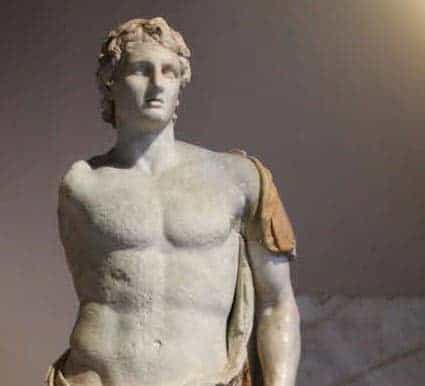
Alexander the Great was the most powerful ruler in history. He invaded Mesopotamia in 334 BC and conquered the whole area from Egypt to India. In 334 BC, he and his troops defeated the ruling king, Darius III of Persia, and by 331 BC, he had conquered Egypt and founded the city of Alexandria.
Conclusion
The cultural and technological influence of the Mesopotamians remains unchallenged. They invented the wheel, irrigation, and the basic codes of law whose effects can still be felt today.
Their discoveries in the fields of astronomy and charting the constellations have given us the concept of time and the calendar. They sowed the seeds of education for us all, and it is no wonder that Mesopotamia is often referred to as “the cradle of civilization.”